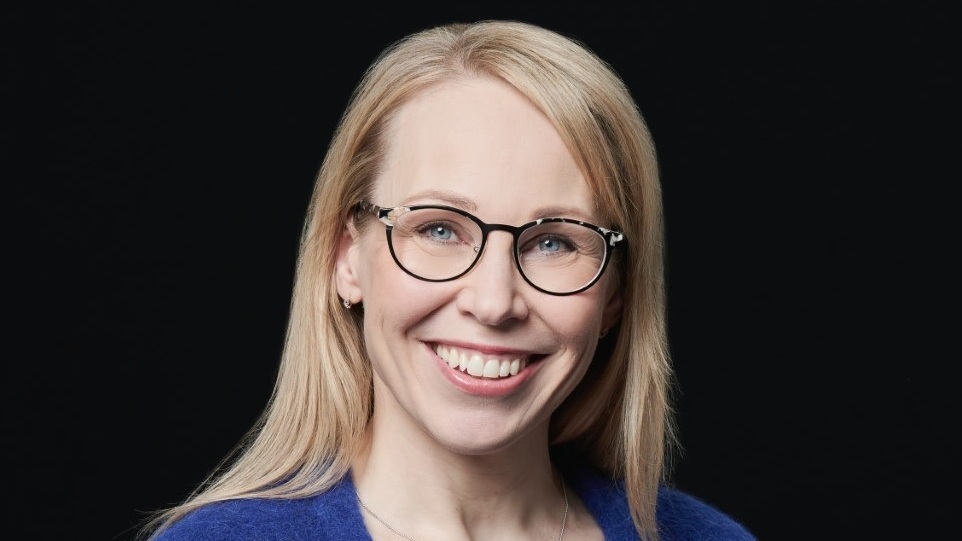
Varma’s Hanna Kaskela on active ownership and spotting investment trends
NZI sits down with Hanna Kaskela, head of responsible investment and sustainability at Finnish insurance firm Varma
From equity analyst to portfolio manager, in the last two decades Hanna Kaskela has held a range of roles at Varma Mutual Pension Insurance Company.
She joined the Finnish insurer 20 years ago, ultimately climbing to the role of head of the group’s responsible investment strategy across all asset classes in 2017 and, in 2022, adding to her responsibilities all sustainability aspects of the company.
Asked why Varma had begun to look into climate change impact on its investments, Kaskela tells Net Zero Investor how essential it is to reduce risks that investors might take and identify investees that can help speed up the low-carbon transition.
Climate-related risks
As her insurance company has pledged to align its portfolio with the Paris Agreement’s objectives and aims at making it carbon neutral by 2035, Varma seeks to address the financial, social and environmental impacts and risks of its investments.
The firm defines physical risks as those referring to the challenges that climate change poses to the society, “such as sudden destruction caused by extreme weather events or the depletion of natural resources in the longer term.”
On the other side, transition risks are related to changes in policies, technology, markets, reputation or consumer behaviour that are surfacing as the economy shifts towards carbon neutrality.
Varma has found industries that are substantially exposed to transition risks but also offer opportunities for emissions reductions, including the fossil fuel sector, construction materials, the chemical industry or metal and mining.
“When we want to decrease our emissions, these are the industries that need to change,” Kaskela says.
The sustainability expert also has a firm view on Scope 3 emissions, which Varma calculated for the first time in 2021 in accordance with the Greenhouse Gas (GHG) protocol. It had then found that about 98% of its GHG emissions were falling under Scope 3.
If you only report on Scope 1 and 2 emissions, it doesn’t make any sense.
The sustainability expert also has a firm view on Scope 3 emissions, which Varma calculated for the first time in 2021 in accordance with the Greenhouse Gas (GHG) protocol. It had then found that about 98% of its GHG emissions were falling under Scope 3.
She finally points out that for every asset class, whether they are listed equities or real estate properties, there are more than one way to spur the market to embrace a low-carbon future.
Investment megatrends
Kaskela notes that Varma, which is responsible for securing the occupational pension of around 900,000 people, intends to exit thermal coal by 2025 and exclude oil exploration firms by 2030.
It has also started to monitor and screen the amount of financing that its investments brokers provide companies with operations in coal or oil, hoping to discourage them from continuing to grant them loans.
“You always get questions about where you don't invest in,” Kaskela stresses. “But once you have identified what the megatrends are, you don't need to think so much about company exclusions.”
“What we have tried to do is investing in future technologies and industries,” she explains. Among them, Varma targets firms that consider climate change as part of their operations and develop solutions, products or services that enable the society to generate less carbon dioxide and resolve climate-related issues.
As such, the firm anticipates climate allocation to account for 25% of its investment portfolio by 2025. That includes green bonds, properties with carbon-free energy consumption and companies with ambitious climate goals and science-based targets.
“The Science Based Targets initiative (SBTi), it's the golden standard,” Kaskela adds.
What we have tried to do is investing in future technologies and industries.
Although Varma is not a member of the UN-convened Net Zero Asset Owner Alliance (NZAOA), it is part of many other initiatives such as Climate Action 100+, Climate Leadership Coalition or Power Past Coal Alliance.
“We always value or assess how many resources we can put into those and what are the benefits for us,” the former portfolio manager claims.
Long-term engagement
Like many investors taking an active ownership approach, Varma frequently discusses with the companies it has invested in.
“The biggest engagement is towards fund managers, at least on the private equity side,” Kaskela says, as the Finnish group wants to make sure they take climate change into account as part of their responsible investment strategy.
Varma also votes at the annual general meetings (AGMs) of companies in which it has a holding.
“Last year, I believe that we voted in 85% of AGMs,” its responsible investment head flags, particularly when shareholders made propositions regarding disclosing emissions or Task Force on Climate Related Financial Disclosures (TCFD) reporting.
For Kaskela, it is essential to use methodologies that have been widely accepted. She however says that the investment community is now ready to comply with more specific and standardised targets than TCFD.
But that’s not the only thing coming in the next few years.
Asset owners
Asset owners are increasingly looking to assess the dependencies and impacts of their investments on biodiversity. As a result, Varma plans to publish a roadmap later this year.
“It's been a long journey because it's a more complex subject than climate change,” Kaskela notes, citing the lack of measures like carbon dioxide emissions in climate risks assessment.
“That's definitely something we need to think about more thoroughly,” she stresses out, as investee companies can be responsible for changes in land use or species endangerment as much as those can threaten their investments.




